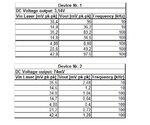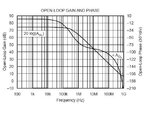- Joined
- Jan 22, 2008
- Messages
- 52,476
- Helped
- 14,756
- Reputation
- 29,794
- Reaction score
- 14,119
- Trophy points
- 1,393
- Location
- Bochum, Germany
- Activity points
- 298,329
I referred to the Wideband Photodiode Transimpedance Amplifier circuit at page 1 of the OPA657 datasheet.What do you mean with " if the source (photodiode) capacitance already allows a gain > 10."
Cf=1pF won't achieve stable operation with OPA657, which OP did you use there?I have build another device with universal capacitor (Rf=2k2, Cf=1pF) and the same result was seen
I understand, that you are referring to an apparent high frequency gain drop at high input levels, while the frequency response is correct with optical attenuation? Are you sure, that the bias circuit is keeping the voltage level at high input level?




